What is Mimblewimble, What Does it Do, and Why You should Care
The cryptocurrency industry is full of funny and strange-sounding words. Hodl, DeFi, CeFi, Satoshi, telling someone how you aped into a project and now are a bag holder for some funny token with a name like Smooth Love Potion can leave any no-coiner shaking their head in confusion. Now we have another to add to the list, Mimblewimble.
Mimble-huh? Let’s sound it out together Mim—ble—wim—ble
There you go!
What is Mimblewimble?
Mimblewimble is a protocol that has strong privacy, security, and scalability features that has a unique way of storing and structuring transactions on a blockchain. Mimblewimble is an important development in blockchain’s history, both as a strong standalone protocol and as a possible integration for other protocols.
The Mimblewimble protocol gathered a lot of attention when it was picked up by Litecoin developers and contributed to the most recent, and arguably the most significant upgrade to the Litecoin network to date.
This funny word may sound familiar to fans of Harry Potter, as this is a well-known magic spell in the non-muggle world that tongue ties people, preventing them from talking about things that are meant to be kept secret. A powerful anti-interrogation tool, indeed.
Here we cover what Mimblewimble is, how to mine it, some of the projects that are using the protocol as well as Litecoin, and include a brief reminder of what Litecoin is in case you are stumbling across this gem of a crypto for the first time or need a refresher.
Disclaimer: I hold Litecoin and Bitcoin as part of my personal crypto portfolio.
Litecoin Recap
Litecoin is one of the serious old-school players in the crypto game. It is a fork of the Bitcoin blockchain created in 2011 by former Google engineer Charlie Lee.

It was initially designed to overcome developers’ concerns that Bitcoin was becoming too centrally controlled. It shares many similar features with Bitcoin (though a different algorithm), and was designed to become a medium for easy, fast, secure, and cheap transactions, which it accomplishes quite well.

Litecoin is one of the few crypto projects that has remained relevant throughout the years along with other OG cryptos like Bitcoin and Ethereum. While many cryptocurrencies have come and gone, Litecoin has withstood the test of time.
If you are ever bored, do a quick Google search of what crypto projects have been in the top ten over the years and you will be amazed at how many once-promising cryptocurrencies have gone the way of the dinosaur.
Litecoin has become one of my personal favourite cryptos for fulfilling what cryptocurrencies were initially designed for, acting as an actual currency and peer-to-peer transactions. Litecoin is the second most widely accepted cryptocurrency globally, second only to Bitcoin which makes it easy to spend.
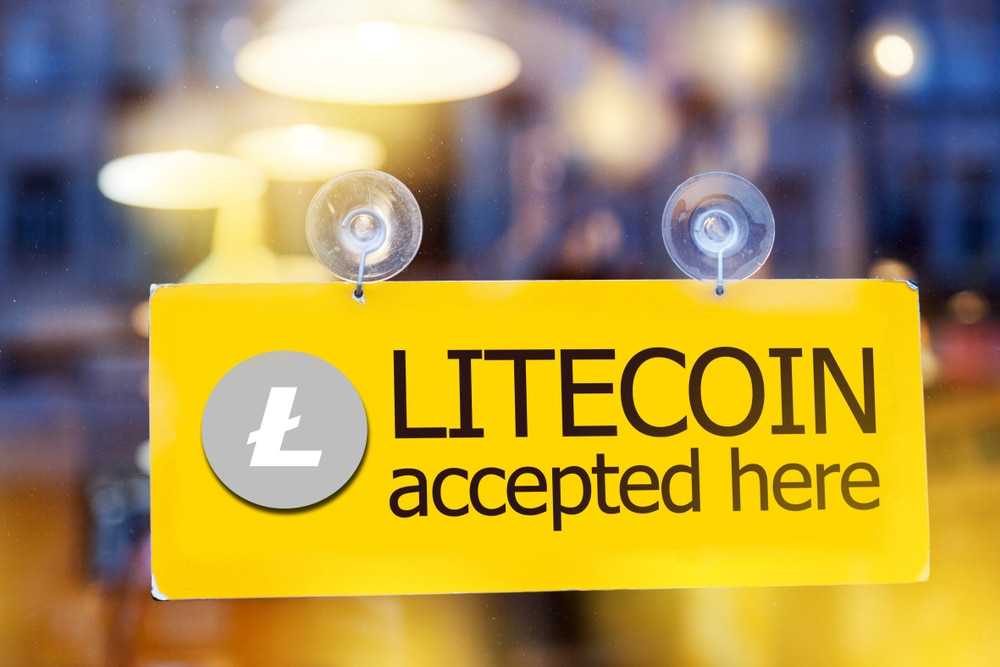
Transactions on Litecoin are significantly cheaper and faster than Bitcoin, and I don’t know about you, but I feel like Bitcoin is too precious for me to be spending on silly purchases, making Litecoin ideal.
Litecoin is often credited as being “digital silver” while Bitcoin is “digital gold,” but I can’t say I completely agree with this narrative. For me, Bitcoin is digital gold no doubt, and Litecoin is more akin to the dollars I keep in my bank account. I hodl Bitcoin, and I spend Litecoin.
You can find more about Litecoin in our dedicated Litecoin Review, it is a cryptocurrency that is worth checking out if you are unfamiliar with it.
Litecoin Mimblewimble Upgrade
Mimblewimble’s integration into Litecoin came about by way of the Mimblewimble Extension Block, aka MWEB. After a period of research into Mimblewimble, a Litecoin Improvement Proposal (LIP) was pushed forward in 2019, and through the LIP, it was decided that implementing the Mimblewimble Extension Blocks was the best way forward for the Litecoin network.
Thanks to the Mimblewimble protocol, Litecoin network users can opt-in and choose to make confidential transactions, (if the wallet/exchange has integrated support) as well as the protocol provides additional benefits to the Litecoin network which will be covered in a bit. LTC saw a price surge after the news.
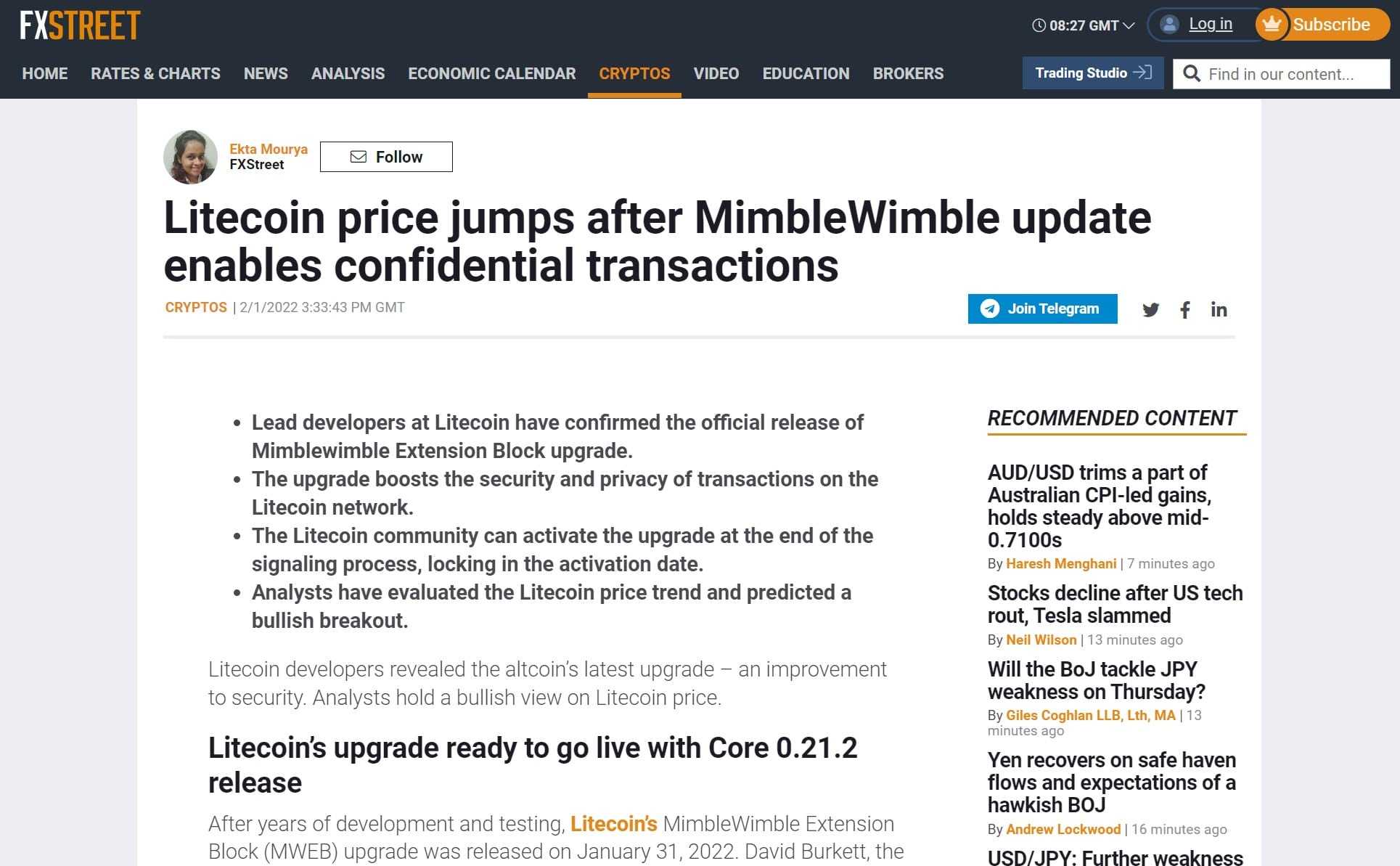
MWEB lead developer David Burkett who is sponsored by the Litecoin Foundation praised the upgrade and said it improves Litecoin’s viability as a fungible currency that can be used for everyday transactions, pay employee salaries and even purchase real estate.
In addition to anonymity and private transactions, the upgrade also plays an important role in the fungibility and scalability of the Litecoin network; scalability is a massive issue across nearly all blockchain protocols, more on that later. Here is a simplified look at how MWEB works with the Litecoin network:
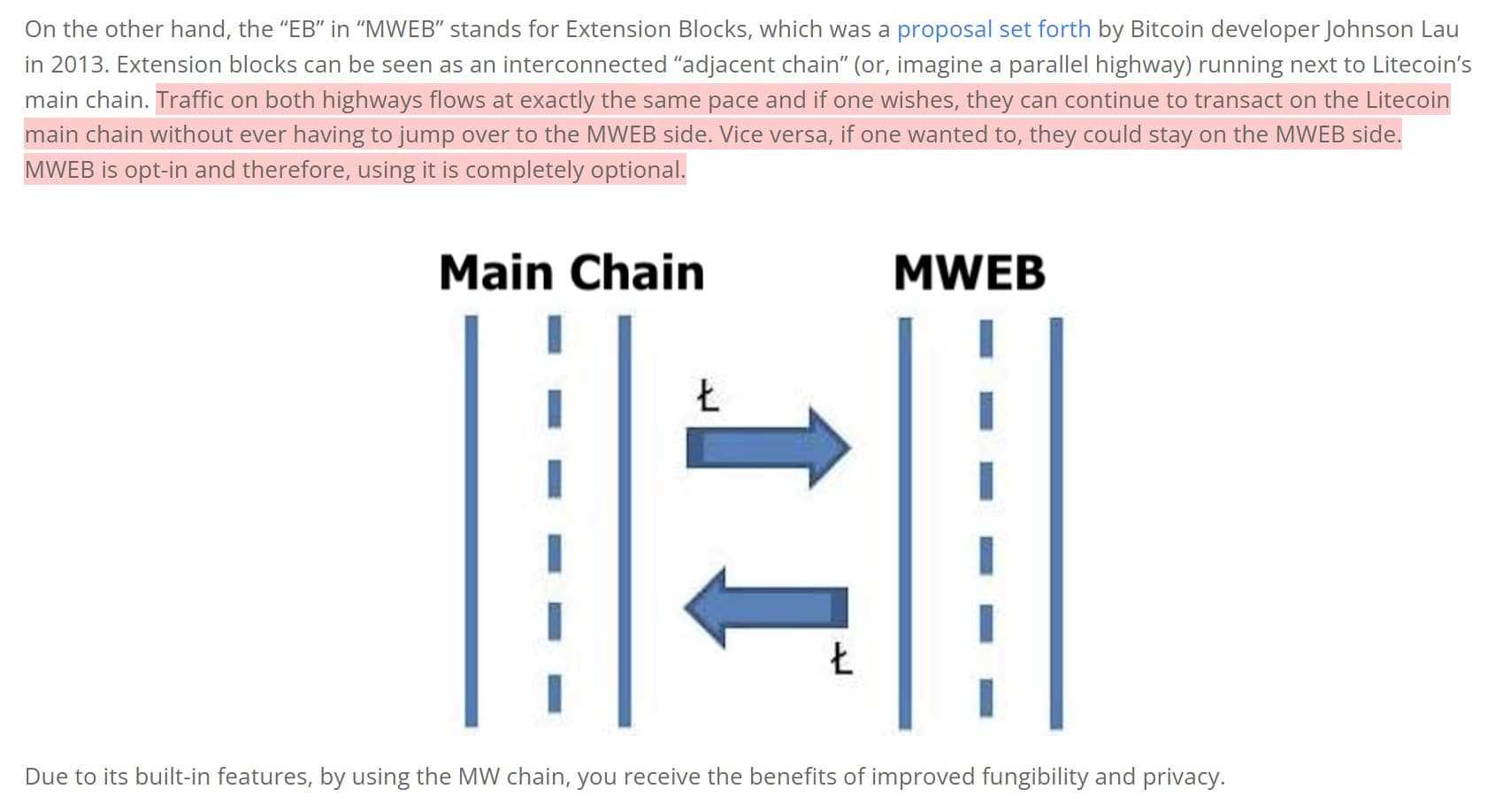
The Litecoin Foundation believes that the Mimblewimble integration will increase Litecoin’s reputation as being “sound money,” and it’s difficult to disagree.
The Litecoin Foundation has a fascinating article called The Battle for Sound Money, and I must say that I learned something quite interesting from it that challenges the narrative that Bitcoin is as “sound” as we all like to believe it is.
For anyone who doesn’t know, “sound money” is a concept that refers to a stable transactional asset that is less susceptible to depreciation, inflation, and manipulative practices that affect traditional fiat currencies. Sound money should also contain the following principles of what makes a viable currency:
- Divisibility
- Transportability
- Scarcity
- Fungibility
- Durability
- Non-Consumable
Let’s take a look at how Bitcoin and Litecoin stack up against gold and Fiat as sound money before Litecoin’s Mimblewimble upgrade:
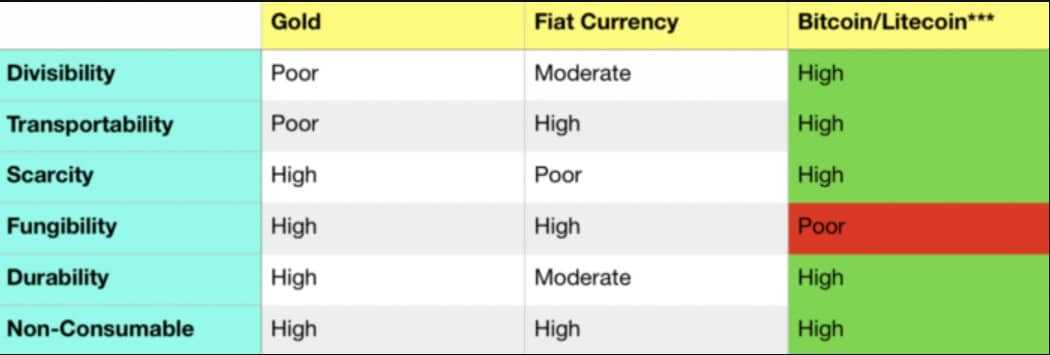
Notice that Bitcoin and Litecoin both get a big fat “F” for fungibility.
Now, why does the Litecoin Foundation consider BTC as having low fungibility?
Here is the interesting part.
Fungibility means that certain items should be mutually interchangeable. I can have a five-dollar bill, you can have a five-dollar bill, and we can swap five-dollar bills and it would make no difference.
Many of us believed Bitcoin to be the same. I have one Bitcoin, you have one Bitcoin, we can swap, and it would make no difference.
But hold on… Due to Bitcoin’s easily traceable transaction history, a freshly mined Bitcoin is not the same as a Bitcoin that is ten years old as it has ten years’ worth of transaction history tied to it. I don’t know where your five-dollar bill has been, but we all know where your Bitcoin has been.
Why is this a problem?
Well, it shouldn’t be. It is estimated that about 90% of all U.S dollar bills in circulation contain traces of drugs and have been used for criminal activity, yet the money is still passed around. There are Bitcoin and Litecoin floating around out there with past illegal activity embedded into their history. You could be holding some Bitcoin that was used for illicit activity in your wallet right now.
This shouldn’t matter, but it does. Many regulated cryptocurrency institutions have decided to take a stance against “tainted” cryptocurrencies that have been used for nefarious purposes, and law enforcement agencies are investigating many of these tainted cryptocurrencies as we speak which could lead the authorities’ investigation directly to your wallet, or an exchange, even if the current holding party had nothing to do with the past illicit actions being investigated.
There are several reports of users buying crypto on an exchange only to have their accounts locked for having sent these tainted crypto assets to their wallets unknowingly. So, with the implementation of Mimblewimble that doesn’t store transaction history, here is how Litecoin grades for sound money now:
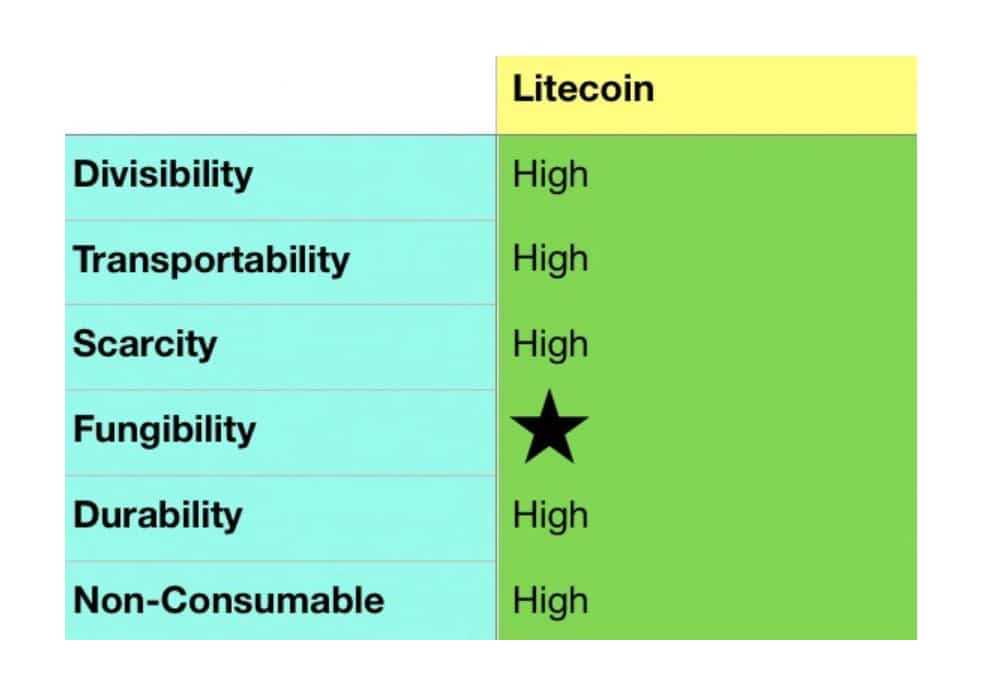
To use MWEB with Litecoin, a crypto wallet or exchange needs to integrate it which would allow users to move coins in or out of the wallet on the MWEB side. The cool thing is that this is completely optional and even if exchanges opt out of MWEB for regulatory concerns, Litecoin can still freely flow which is a massive advantage over privacy only coins like Monero which can be outright banned from exchanges as we have seen with multiple Monero delistings and regulatory anti-privacy crypto crackdowns.
Defining Mimblewimble
Mimblewimble is a privacy-oriented decentralized protocol that uses a way of structuring and storing transactions on the blockchain with privacy and scalability features built-in. It is well known now that blockchain transactions are completely transparent; they can be viewed by anyone, for all time.
Privacy coins such as Monero and Zcash have become incredibly popular as many crypto enthusiasts prefer making crypto transactions in private for many reasons that we won’t go into here, and no, not just because they want to make illegal purchases.
Even if I have nothing to hide, personally, I still don’t think the government or friends and family need to know about every single purchase I make, or how many pennies are in my bank account.

Mimblewimble relies on strong cryptographic primitives which provide an excellent framework for a blockchain that has good scalability, privacy and fungibility.
Mimblewimble first began its design and was introduced to the world in 2016 by an anonymous developer who went by the name of Tom Elvis Jedusor, which is another Harry Potter reference. The Mimblewimble whitepaper was published in July 2016, and shortly after its publication another anonymous author using another Harry Potter pseudonym ‘Ignotus Peverell’ started a Github project using the Mimblewimble protocol called Grin which we will cover later on.
How Does Mimblewimble Work?
It’s more complicated than simply waving a wand and uttering a spell, I assure you… Or maybe it isn’t? I’ve never waved a wand and cast a spell so what do I know?
Mimblewimble uses a form of elliptical-curve cryptography which we will get into the nitty-gritty on in the next section. In a network that uses the Mimblewimble protocol, there are no addresses on the blockchain which aids in the network data storage being highly efficient.
Mimblewimble only requires about 10% as much storage as the Bitcoin network, making it highly scalable and faster. In contrast to Bitcoin, when a user sends a BTC transaction, three pieces of information are made public:
- The sender’s address
- The receiver’s address
- The amount
With Mimbewimble, these three pieces of information can be concealed from the public blockchain ledger.
The protocol does not use the same input/output UTXO model that is used by Bitcoin. Instead, Mimblewimble uses a multi-signature model for all inputs and outputs.
Transactions using this model are known as Confidential Transactions (CTs) and they use the Pedersen Commitment Scheme, which means that there are no addresses required. Instead, transactions use a “blinding factor” which encrypts the inputs and outputs of the transaction, along with both sender and receiver public and private keys. This blinding factor is shared secretly between the two parties engaged in the transaction, keeping the privacy of the network very high.

Instead of making each transaction’s inputs and outputs public, Mimblewimble aggregates all transacting parties and verifies the entire sum of each signature. This leads to not needing to store individual addresses and amounts. Nichanank has a great blog that explains the transactions in more technical detail and has created this diagram to show how it looks:
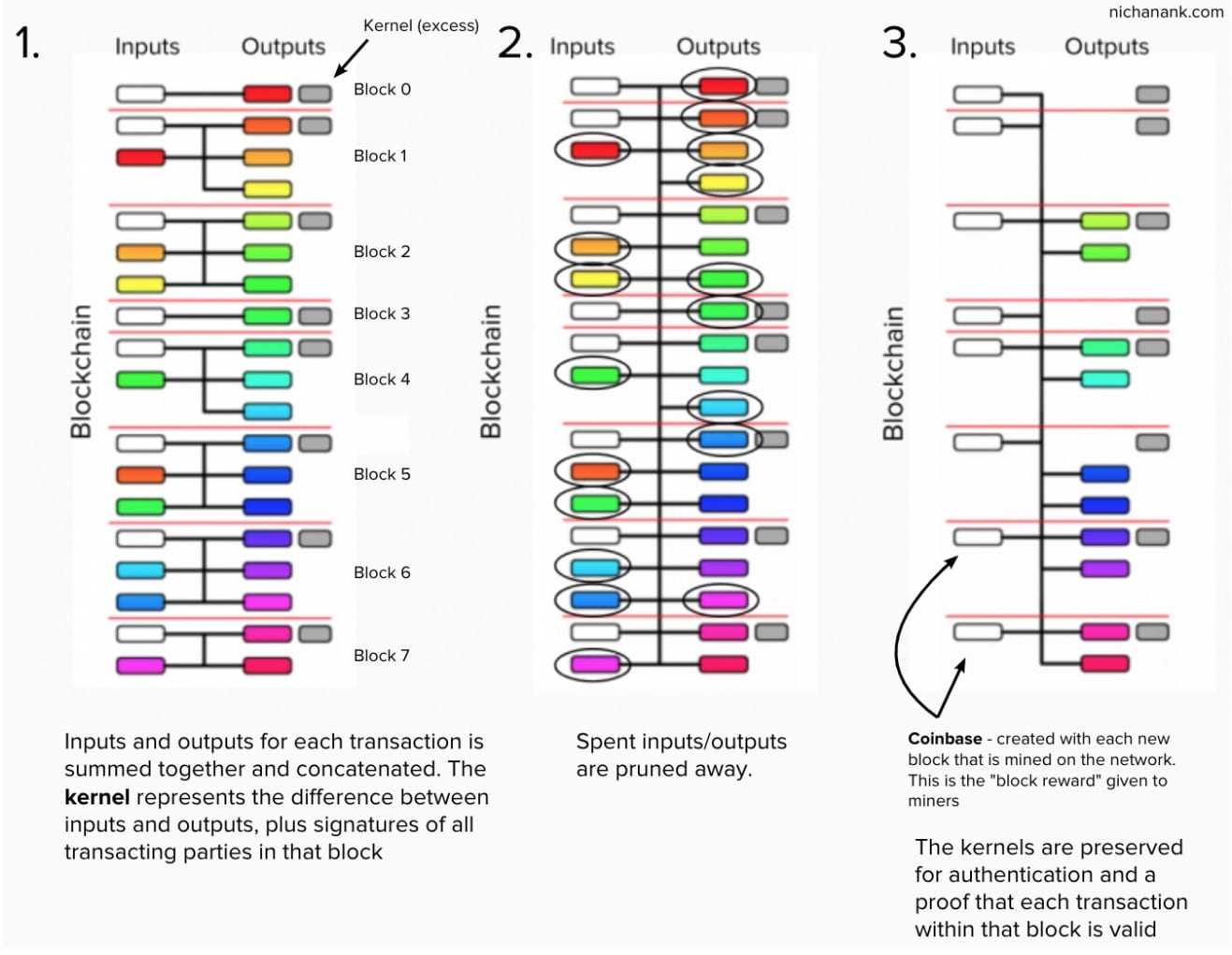
Mimblewimble's Cryptography
The cryptographic approach is named Elliptic Curve Cryptography (ECC), and that is what allows Mimblewimble to achieve blockchain transactional requirements of verifying the correct transaction amount, along with the sending and receiving party without publicly revealing the information.
ECC is based on discrete logarithms, the term discrete refers to a branch of mathematics that revolves around a set of discrete mathematical values and employs topics such as probability and set theory.
This also strengthens protocol security, but it doesn’t stop there. Mimblewimble also combines the following cryptographic protocols:
- Confidential Transactions (CTs)- This is the protocol that is also used by Monero and conceals the value of transactions.
- Dandelion-The Dandelion protocol hides the identity of both the sender and receiver.
- CoinJoin- The CoinJoin protocol makes it very difficult, if not impossible to trace the trail of transactions. This protocol allows public addresses of transactions to remain hidden by combining payments from various senders under a single transaction. CoinJoin also helps compact blockchain data because it no longer requires the storage of all other transactional data aside from inputs and outputs.
Here is a look at how transactions look with and without CoinJoin:
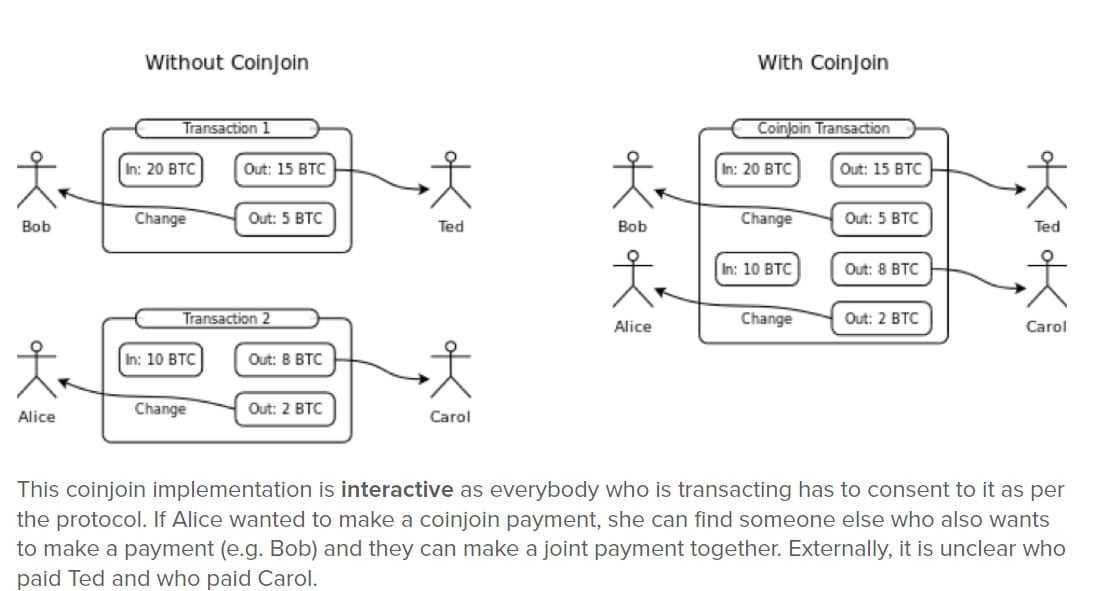
- Cut-Through- This protocol creates small transaction blocks by aggregating multiple transactions into a single set which enhances scalability as the aggregation process results in smaller blocks. Cut-Through also allows for information from the blockchain to be easily removed without risking security.
These all work together in the Mimblewimble protocol to conceal transactional information while aiding in scalability and security.
What are Mimblewimble's Core Features?
In case you haven’t already gathered, the Mimblewimble protocol has a lot to offer crypto networks with regard to anonymity, fungibility, and scalability.
Anonymity- The majority of blockchain networks have traceable public addresses which publish sender and receiver information for any translations.

Transaction history on Mimblewimble is incredibly difficult, possibly impossible to track.
Fungibility- The fact that assets are difficult to trace makes Mimblewimble-enabled protocols and their assets more fungible compared to other blockchains.
Since users can exchange any cryptocurrency on the platform without the risk of loss or possibility of the crypto asset being “tainted” via illegal activity history which can lead to criminally tied coins bearing less value, Mimblewimble transacted assets are considered more fungible.
Scalability- Ah, scalability… The kryptonite that plagues nearly all decentralized blockchain networks. Because Mimblewimble implements CoinJoin and Cut-Through, this eliminates unnecessary transaction information which reduces block sizes, allowing for enhanced scalability.

Mimblewimble allows for better scalability than is attainable by many crypto networks. If you want to learn more about scalability issues and why the “blockchain trilemma,” is a serious hurdle that sends many crypto projects to their graves, check out our Algorand review article where we cover the blockchain trilemma in detail.
What are Mimblewimble’s disadvantages?
While the Mimblewimble protocol is quite revolutionary, nothing in blockchain comes without its drawbacks. Here are the major ones for the Mimblewimble protocol:
- Longer Transaction Throughput- Systems that support Confidential Transactions often suffer from lower transaction speeds than what is available from networks like Ripple (XRP) and PoS networks like Solana and Cardano due to Confidential Transaction’s data size.
- Reliance on Digital Signatures- As Mimblewimble is reliant on digital signatures, this makes the protocol more vulnerable to theorized quantum computer attacks.
Who is Using Mimblewimble?
Whether you like Litecoin or not, the Mimblewimble protocol is pretty darn amazing and has gathered attention outside of just the Litecoin ecosystem.
Several other crypto projects have chosen to adopt Mimblewimble due to its enhanced security, privacy, and scalability features, while many more crypto projects are researching the protocol.
The first team to theorize the use of Mimblewimble is the same team behind the privacy digital currency called Grin (GRIN) back in 2016. Grin is an open-source project whose developers laid the foundation work for the project to be created on Mimblewimble but had only launched based on Mimblewimble in 2019.
Grin is a community-driven project that is working on a lightweight proof of concept of the Mimblewimble protocol. For Grin transactions, there are no exposed addresses, no amounts, and 2 transactions which “spend” one another are merged together to form one transaction with all intermediary information removed from the transaction.
A Grin block looks like one big transaction and original associations between inputs and outputs are not preserved on the blockchain. Here is a look at the Grin blockchain explorer:
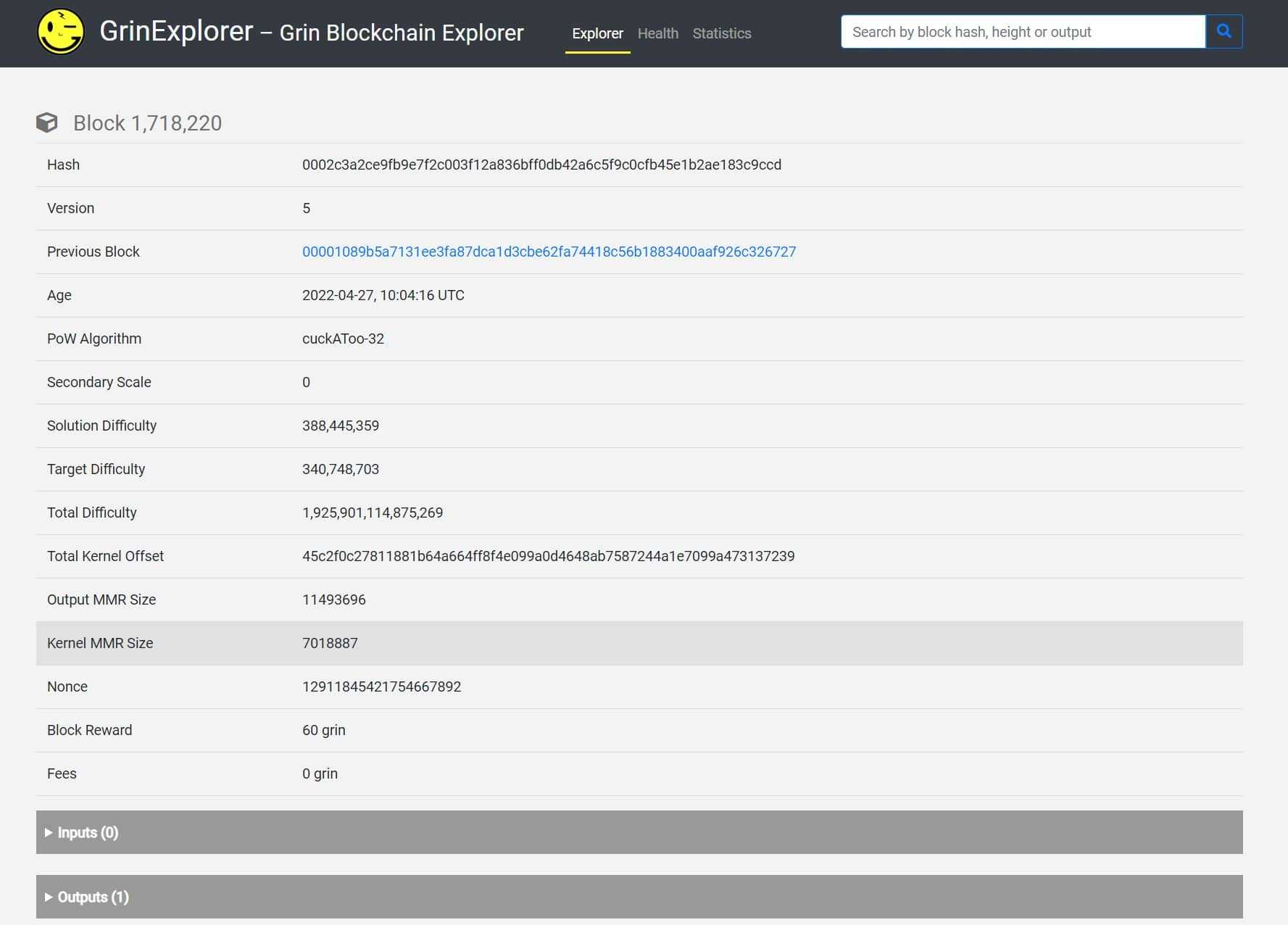
Notice the lack of addresses, amounts and individual transaction data information.
Another privacy-focused cryptocurrency that uses the Mimblewimble implementation is Beam (BEAM), which runs on the same principles as Grin.
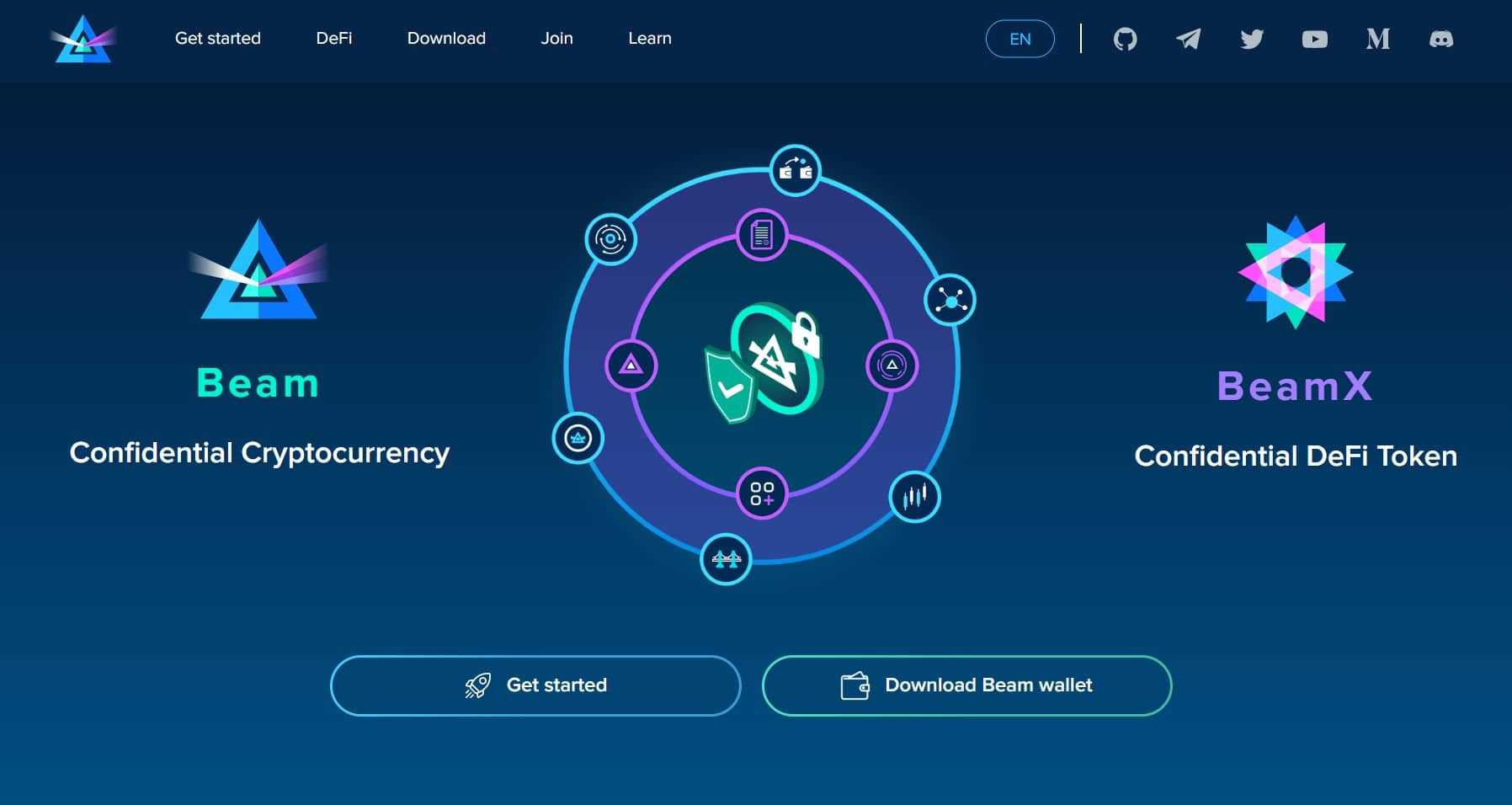
Beam has a confidential decentralized financial ecosystem full of DApps for anyone looking for privacy-focused DeFi. Here is a quick look at some of the features and advantages of Beam leveraging the Mimblewimble protocol:
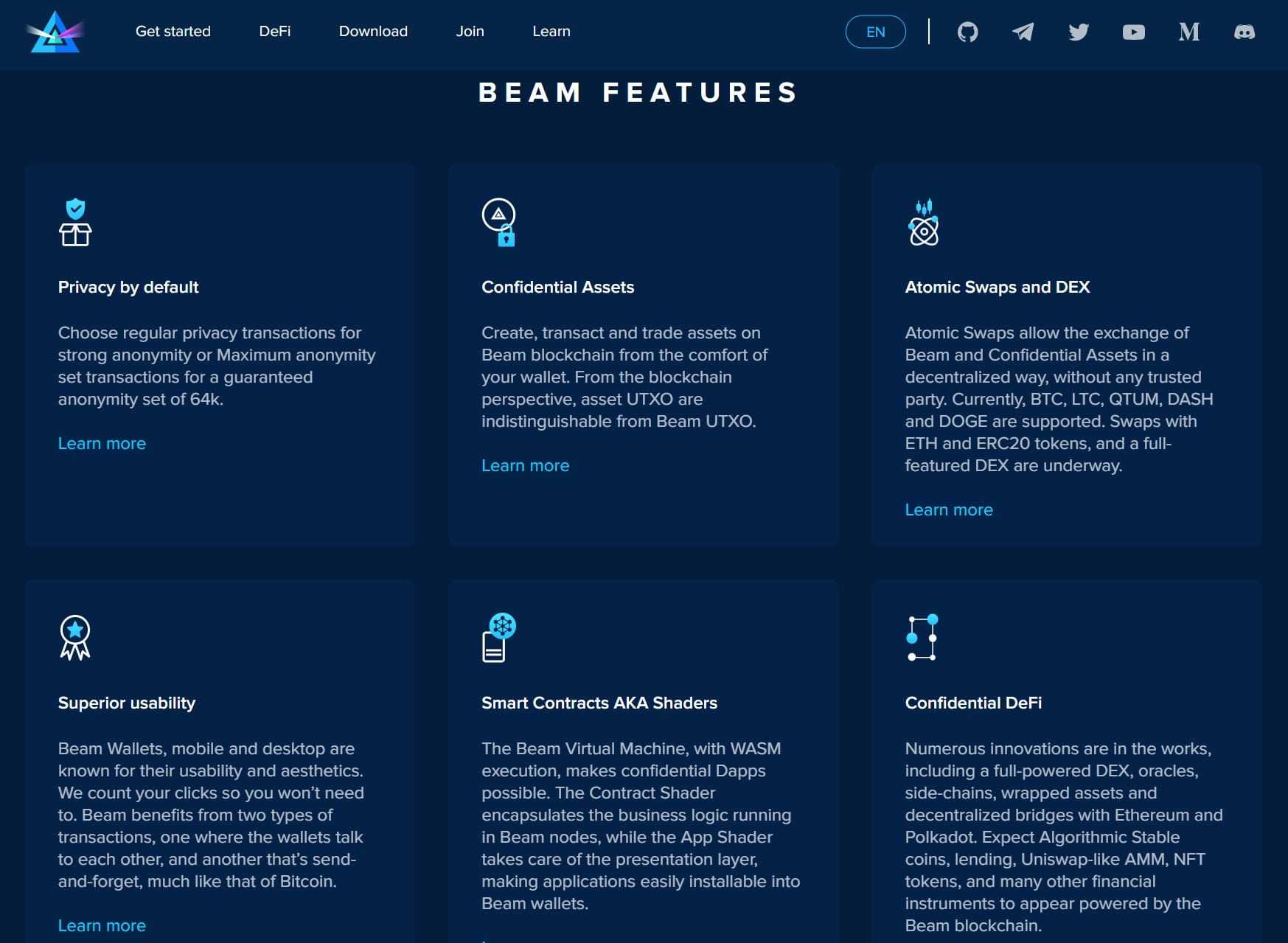
Network activity has been increasing on Beam and this is definitely something worth checking out for any DeFi enthusiasts who are concerned about privacy.
Perhaps the most interesting and ambitious project utilizing the Mimblewimble protocol in its full capacity is Epic Cash. Epic aims to fulfil Satoshi’s original vision of creating a pure, decentralised, trustless, peer-to-peer payment system, and thanks to Mimblewimble and proprietary technology, Epic Cash resolves Bitcoin’s shortfalls regarding mining centralisation, privacy, scalability, and fungibility.
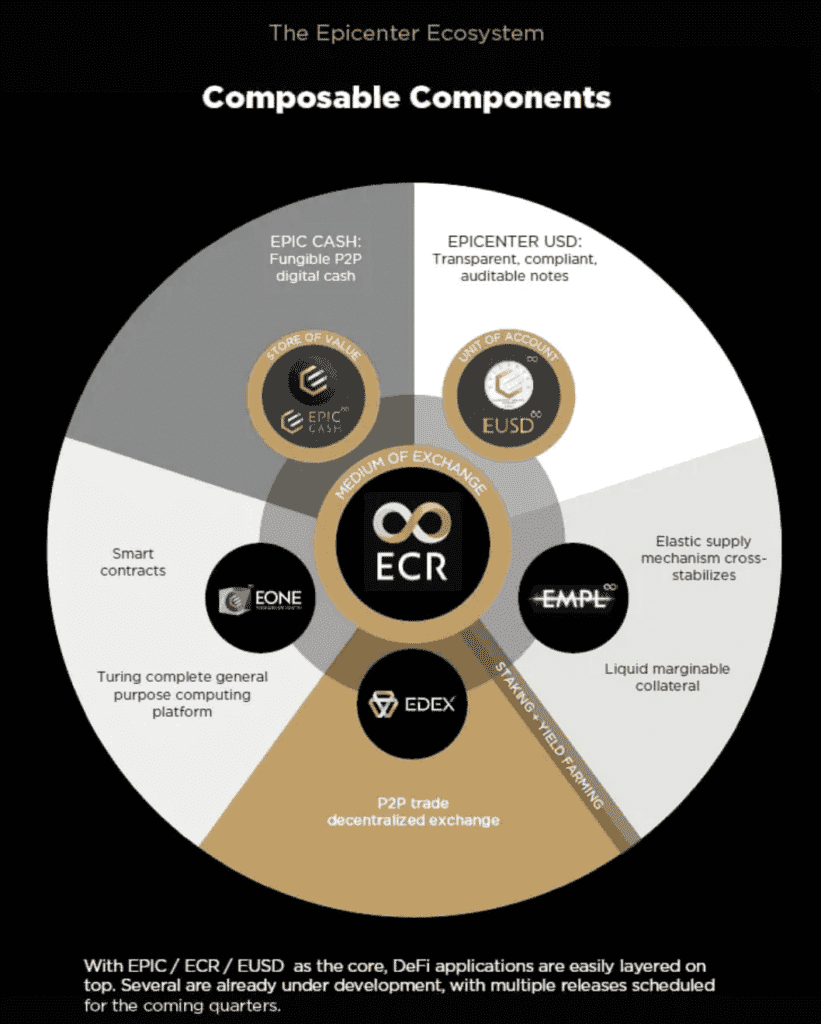
The Epic Cash community has created not just what they consider to be a better version of Bitcoin, but are building an entire financial system from the ground up, looking to disrupt and replace the corrupt system we have today. You can learn more about this ambitious project on the EPIC Cash Information page.
There is also the Mimblewimble coin, but this shouldn't be confused with Mimblewimble the protocol, as Mimblewimble Coin (MWC) is simply one of the many projects utilizing Mimblewimble technology.
Will Bitcoin Adopt Mimblewimble?
As Mimblewimble has the ability to sufficiently increase scalability, security, fungibility, and anonymity on a blockchain network, serious discussions are happening in the Bitcoin community as to whether or not Bitcoin should be adopting the protocol.
Before Litecoin integrated the protocol, it was often said (half-jokingly), that Litecoin is essentially a testnet for Bitcoin, with that narrative being taken more seriously now since Litecoin’s implementation of Mimblewimble. If something can work on Litecoin, it is generally accepted that it can work on Bitcoin.

Some researchers and developers have stated that implementing the protocol on Bitcoin would be too difficult, though possible, while many others believe that Mimblewimble may eventually improve the Bitcoin network as a sidechain solution.
In its current form, Bitcoin does not have the transaction speed or throughput to compete with the likes of Visa as a global instant payment network, but Poelstra, a mathematician with Blockstream focused on expanding the Bitcoin codebase for commercial use, proposes that Mimblewimble could potentially be a solution to handling a huge amount of simple Bitcoin transactions.
Here we can see a great visual from HowMuch.net, a financial literacy website that shows that Bitcoin would need a serious upgrade to come close to the likes of Visa:
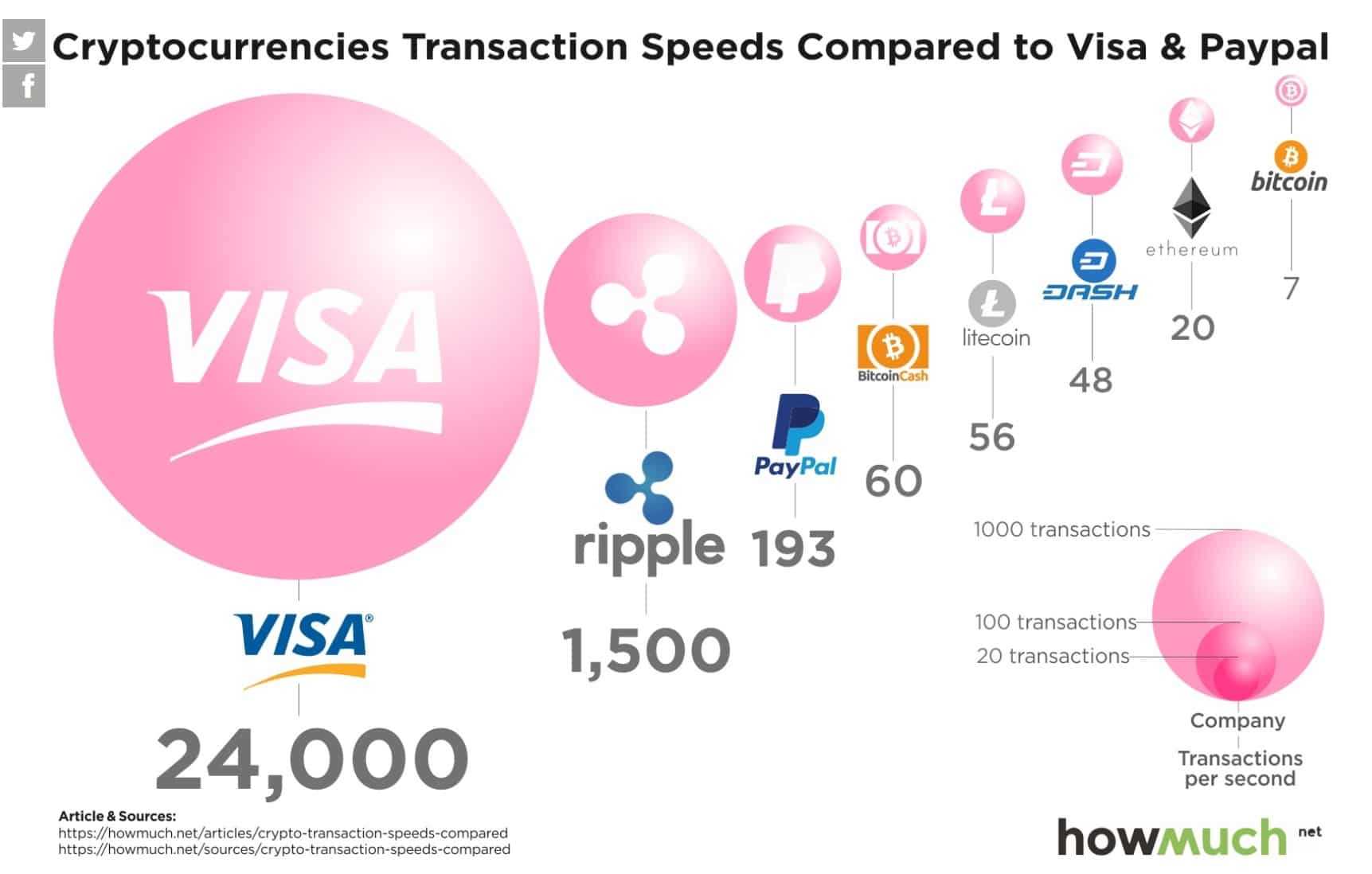
While Pieter Wuille, a Bitcoin developer and co-founder of Blockstream described the complications in an interview with Motherboard:
"It would be very difficult to integrate into bitcoin, or at least in a bitcoin as we know it. There are no addresses, no balances, no scripts, so I expect we certainly can't integrate it in any way except as a separate experimental 'area.'"
Wuille’s concerns are mirrored by Chris Burniske, blockchain products lead at Ark Invest as he stated:
“While the approaches of Mimblewimble are novel, there are other solutions to both privacy and scalability problems already, and Mimblewimble appears too much a deviation from the Bitcoin protocol to be implemented in the core software."
Poelstra addresses the concerns by suggesting that Mimblewimble could be a viable sidechain for Bitcoin, stating that people could move Bitcoin onto the Mimblewimble sidechain, transact with their funds while benefitting from Mimblewimble’s features, then move the funds back onto the Bitcoin network.
This could work as a low-functionality, high-scalability, and high-privacy system for simple Bitcoin transactions. Developers like Poelstra and Blockstream are still exploring the viability of using Mimblewimble sidechains as a benefit to the Bitcoin ecosystem.
Closing Thoughts
The creation of Mimblewimble marks an important milestone in blockchain history. The features of the protocol are quite revolutionary, and many feel that Mimblewimble has laid the groundwork for the future of privacy-focused protocols and that it has plenty to offer in terms of benefitting already existing networks.
While the protocol is impressive as a standalone network, its applications as a sidechain or payment channel solution that allows for privacy and scalability is also an important consideration as this opens up options for additional utility and adoption across the entire crypto ecosystem.
While so far there are only a few projects working with the Mimblewimble design, there are discussions from other blockchain projects looking at the robust advantages that Mimblewimble can provide to their networks. I would not be surprised to hear this funny word pop up more in the future, depending on how draconian anti-privacy coin regulation becomes of course.
Frequently Asked Questions
Mimblewimble is a privacy-oriented decentralized protocol for structuring and storing transactions on a blockchain. It enhances privacy, security, and scalability, making transactions difficult to trace.
Mimblewimble uses elliptic-curve cryptography, Confidential Transactions, Dandelion, CoinJoin, and Cut-Through to provide privacy, fungibility, and scalability. Transactions involve blinding factors and multi-signature models, concealing sender and receiver information.
Litecoin is one prominent cryptocurrency that integrated Mimblewimble through the Mimblewimble Extension Block (MWEB) upgrade. Other projects include Grin and Beam, which are privacy-focused coins leveraging Mimblewimble.
Mimblewimble conceals transaction details, making it challenging to trace sender and receiver information. It eliminates the need for public addresses and obscures the amounts involved in transactions.
Epic Cash is an ambitious project using Mimblewimble to address Bitcoin's shortfalls in mining centralization, privacy, scalability, and fungibility. Other blockchain projects are also exploring the benefits of Mimblewimble.
Disclaimer: These are the writer’s opinions and should not be considered investment advice. Readers should do their own research.


